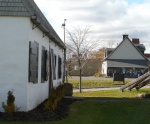Beauport «Seigneurie»
par Grenier, Benoît
Few concepts are as closely linked with the history of Quebec as the seigneurial [feudal] system, which was established along the St. Lawrence River in the early days of colonisation by the French. The landscape, heritage assets and place names of the St. Lawrence valley still bear the marks of seigneurial feudalism, which, after having survived for nearly a hundred years under British rule, was abolished in 1854. However, Quebec-especially rural Quebec-continued to be defined by the seigneurial system long after 1854. Although seigneuries were a major cornerstone of Quebec's history, the remaining traces of their existence do not always reflect their importance. In some areas, the remains of a seigneurie have given rise to a veritable heritage industry, while in others they seem to have faded into obscurity. Beauport, one of the oldest seigneuries in Canada, is a perfect example of this paradox.
Article disponible en français : Seigneurie de Beauport
From Seigneurie to Chartered City
A number of cities in Quebec are the direct legacy of 17th- and 18th-century seigneuries. Examples include Boucherville, La Prairie, Terrebonne, Chambly, Contrecoeur, Saint-Augustin-de-Desmaures, Rimouski and Rivière-du-Loup, whose very names establish the connection between the current city and the original seigneurie. Furthermore, these towns are full of streets, schools, parks, and other institutions named after the old seigneurial lords, who were often also the founders of the towns themselves.
Moreover, visible traces of the seigneurial system can still be found across the landscape of the St. Lawrence Valley, especially when the region is viewed from the air. In former seigneurial fiefdoms that have remained rural and agriculturally-oriented, such as Île d'Orléans or the municipalities of Côte-de-Beaupré, land tracts have retained their typical long, narrow, rectangular shape, just as it was divided up by a seigneural lord centuries ago. The long, narrow tract shape ensured that a maximum number of inhabitants had access to the waterfront at a time when rivers were the chief means of transportation.(NOTE 1) Elsewhere, especially around Montreal and Quebec City, urban sprawl and the growth of suburbs gradually erased the traces of the traditional seigneurial land divisions from the landscape. Not only did the modernization of Quebec society in the 20th century steadily change the face of the landscape inherited from the seigneurial system (especially after the 1960s), but it also wiped out part of the province's architectural heritage-whether be it the buildings built by the feudal lords themselves (mills and manors) or those erected in the rangs [ranges]-all of which testified to the various stages of evolution of the seigneurial fiefdom. Although certain regions have managed to preserve and promote the remaining physical traces of their local seigneural heritage and history, other areas have attempted to cut ties with the past, in spite of a regional toponymy that is quite deeply rooted in the seigneurial system. Beauport is a perfect example of such a contradictory attempt to simultaneously commemorate and abandon a past rooted in the seigneurial system.
The Beauport Seigneurial System: a Paradox of Commemoration and Neglect
The seignurial fiefdom of Beauport was the first to have been settled and agriculturally developed by a feudal lord. (NOTE 2) In 2009, the city (which is now part of Quebec City) celebrated the its 375th anniversary.(NOTE 3) The original seigneurie was granted to apothecary and master-surgeon, Robert Giffard (circa 1587-1668), of Mortagne-au-Perche in 1634, thereby making it one of the first seigneuries under the French regime, along with nearby Notre-Dame-des-Anges (1626) and Beaupré (1636). According to Marcel Trudel, it is quite impossible to separate the history of Beauport from that of the earliest colonists. He writes that, "Settlement of the colony did not begin until a fleet of ships under the command of Robert Giffard and the Juchereau brothers arrived in 1634 bearing the necessary provisions for the colonisation effort."(NOTE 4)
Robert Giffard's seigneurie was located near Quebec City, the heart (and capital) of New France. It was a favourable location that undoubtedly contributed to the speed with which it was settled. In 1634, labourers Jean Guyon and Zacharie Cloutier became Giffard's two first tenants and each was awarded a rear fief(NOTE 5), in exchange for their work clearing the land. Beauport's first families joined Guyon and Cloutier two years later, but the feifdom was still only modestly populated during the first twenty years of its existence. For, by 1645, just over ten years after Giffard's arrival, only seven families had moved to the area. The establishment of Fargy(NOTE 6), Quebec's first fledgling village (around 1654), was a major step in the growth of the fiefdom. Nevertheless, it wasn't until the 1670s, with the arrival of a second feudal lord, Joseph Giffard, that parcels of land were granted on ranges farther inland that later became the towns of Saint-Joseph, Saint-Michel, Sainte-Thérèse and Saint-Ignace. At the time of the 1725 census, the Beauport seigneurie was home to about a hundred families living on its various ranges, as well as eleven stone houses. The Maison Girardin [House], a historical interpretation centre located on Royale Avenue in the heart of Beauport, is an example of one these 18th-century stone houses. The Beauport seigneurie grew and soon reached its settlement capacity, and so, the sons and daughters of the original settlers were eventually obliged to head off to establish themselves in new areas such as the Beauce (settled in the 1740s). (NOTE 7)
Despite its proximity to Quebec City and the industrialisation of the Montmorency area (which largely resulted because of the potential energy that could be harnessed from the falls of the same name), the town of Beauport remained largely focused on agriculture until the mid-20th century, when it gradually became a bedroom community during the 1960s and 1970s. Increased urban sprawl in what is now Quebec City's fifth borough has quickly erased much of its seigneurial heritage. Despite all of this, a historic district(NOTE 8) was established in Beauport in 1964, living proof that the locals are indeed aware of their town's heritage assets. This is particularly obvious to the south of town, on Royale Avenue, which has been given the tourist-friendly moniker Route de la Nouvelle-France.
Seigneurial Heritage in Beauport
And so, what is left of Beauport's seigneurial heritage today? The importance of the feudal era and the historical significance of Robert Giffard and his descendents, the Juchereau-Duchesnay family, were not enough to automatically ensure that the remaining vestiges of the seigneurial fiefdom would be preserved for posterity. Beauport area is certainly full of places whose names reflect the region's history. For example, Rue Seigneuriale, which runs north - south across town, was once a road leading to the ranges to the rear of the seigneurial lands. The ranges are now known as Saint-Joseph (which has been renamed Joseph-Giffard since the municipal conglomeration), Saint-Michel, Sainte-Thérèse and Saint-Ignace avenues, all of which are the names of former seigneurial lords. Other historically significant names are La Seigneurie high school, Centre hospitalier Robert-Giffard,(NOTE 9) Rue Robert-Giffard and Rue Marie-Renouard (the latter is named after the first seigneuresse [female heiress to a seigneurie]). An elementary school is also named after Marie Renouard. Finally, Juchereau, Duchesnay, and Du Manoir streets are all reminiscent of the location of the original seigneurie, of which no traces remain. The manor, which was built the 17th century, burned down in the late 1870s-far too long ago for any collective memory of it to have survived in the minds of Beauport's residents.(NOTE 10) The same is true of the last water mill, which now exists only in the form of a few ruins on the Beauport River.(NOTE 11)
One has to wonder if the seigneurial family's departure in the mid-19th century, after more than two hundred years in the area, or the complete lack of seigneurial descendents in the community contributed to the people of Beauport consciously or unconsciously forgetting their past as a seigneurie. In addition there are no remaining physical traces that indicate the actual location of the original domain to locals or passers-by, no plaques to recall the existence of what once was the first seigneurial manor in the history of the Province of Quebec. One cannot help but notice the apparent contradiction between the abundance of place names that pay tribute to the area's seigneurial history and the fact that these mean little for most of Beauport residents-all who have had little opportunity to learn about their town's heritage.
Beauport still bears the marks of the original layout of the fiefdom drawn up by Robert Giffard and his successors. Giffard decided to lay out the land parcels along a north-south axis, which can still be seen today in the angle of the homes along Royale Avenue between the Beauport and Montmorency rivers, once the natural boundaries of the seigneurie.(NOTE 12) Despite certain obvious gaps in the continuity of the heritage neighbourhood,(NOTE 13) Beauport's historic district is home to a number of dwellings that date back to the days of the seigneurie. In fact, there is a higher concentration of heritage dwellings here than almost anywhere else. However, the remaining vestiges of the former seigneurie are pretty much at the mercy of developers, whether it is the historic homes built on the ranges (which are not protected, but are often older than those on Royale Avenue) or the area's agricultural heritage (which has been in a steady decline for the last decade). Since early 2000, the former Saint-Joseph range-home to Beauport's last remaining French regime-era farmland-also underwent modern development, transforming it into a residential district. And to the apparent delight of local residents, a typical North-American megamall was even built in the vicinity. And so, it should come as no surprise that, when one of the last remaining historical houses on the range, the Charles-Drouin house(NOTE 14), was demolished to make room for a car dealership parking lot, it barely caused a ripple among the local population. It also explains the hard times that have fallen on Royale Avenue, where local merchants fight to keep the "Vieux Bourg" historic district alive despite intense competition from big box stores.
Preserving Beauport's Seigneurial Heritage: Case Examples
It is worth mentioning that, unlike the previous example, some of the more remote, isolated sites, such as manors and mills, have taken advantage of their situation to preserve the traces of their seigneurial heritage. (NOTE 15) In many cases, private corporations have been created to ensure their conservation and public awareness of the sites. On Île d'Orléans, another of New France's earliest seigneuries, the Mauvide-Genest manor was fully restored and opened as an interpretation centre in 2002. There are two main reasons for this positive change: first, the decaying remains of the building were bought and restored in the 1920s by Judge Pouliot, an ardent French-Canadian nationalist and descendent of the Genest family (the wife of the former seigneurial lord); and second, Île d'Orléans is one of the Province of Quebec's treasured heritage sites.(NOTE 16) Nevertheless, the island's cherished place in Quebec culture does not ensure that all necessary conservation efforts will be taken to preserve all of its heritage assets. An example of this is the Poulin Mill (erected in Saint-Famille in the 1840s), which is in a state of total ruin, even though it has yet to be recognized as a cultural (or heritage) asset in spite of numerous recommendations to this effect.(NOTE 17) Other sites, such as the windmill on Perrot Island(NOTE 18) and the water mill in Les Éboulements, have fared much better.
There are additional examples of the various ways in which the sites of former Quebec seigneuries are being recognised as heritage assets. The Manoir Dionne (erected in Saint-Roch des Aulnaies between 1850 and 1853) has become an interpretation centre for the seigneurial system and depicts the lifestyle of the "country gentleman" just prior to the 1854 abolition of the seigneurial system.(NOTE 19) Farther up the St. Lawrence River, the lands and manor of Joly de Lotbinière(NOTE 20) are also used to depict 19th-century seigneurial life. The same is true of the Manoir Papineau in Montebello of the Outaouais region, where Parks Canada runs a centre dedicated interpreting the life and times of politician and seigneurial lord, Louis-Joseph Papineau.(NOTE 21) Unlike the case of Beauport and its disappearing seigneurial heritage, these sites are examples of a history that is alive and well, whether it be in the form of interpretation centres, parks, gardens, or even summer camps (as is the case in Les Éboulements).
To conclude, the context surrounding Beauport's seigneurial heritage is a fascinating case because of the unusual paradoxal nature of the situation. Firstly, it is one of the oldest towns in French North America and, as a result, its historic district has been a heritage conservation area for nearly fifty years, although its rich seigneurial heritage goes largely unnoticed-in spite of the slew of place names that make direct references to the past. It is a perfect example of the ongoing struggle to raise the public's awareness of the heritage issues at stake and the role that they can play in the struggle.(NOTE 22) A recently dedicated monument commemorating Beauport's founding fathers that was erected during Quebec City's 400th anniversary celebrations is proof that there is a certain vitality in the efforts to honour Beauport's seigneurial heritage. The same can be said of a number of other localities in Quebec's oldest regions surrounding Montreal, Quebec City and Trois-Rivières-where rampant growth and urban sprawl have continue to erase the traces of a centuries-old seigneurial heritage.
Benoît Grenier
History
department, Université de Sherbrooke
NOTES
Note 1: The geographical characteristics that are typically associated with the seigneurial system in Quebec have nothing to do with the system's European roots.
Note 2: If one ignores the Sault-au-Matelot fiefdom, commoner land granted to Louis Hébert and transformed into a fief in1626. Since Hébert lived on the property, it is accurate to say that his was the first inhabited fief.
Note 3: www.ville.quebec.qc.ca/publications/docs_arrondissements/beauport/beauport_375ans_depliant.pdf (Page visited June 11 th, 2009).
Note 4: Marcel Trudel, Histoire de la Nouvelle-France III : La seigneurie des Cent-Associés I : Les événements, Montréal, Fides, 1979, p. 130.
Note 5: A rear fief is a sort of fiefdom-within-a-fiefdom; its owner is a seigneurial lord, but ranks below the owner of the seigneurial fiefdom, to whom he owes fealty and homage. For more, see: Laurent Marien, "Les Arrière-fiefs au Canada de 1632 à 1760. Un maillon socioéconomique du régime seigneurial," Histoire et Sociétés Rurales, no. 19 (1st semester 2003), p. 159-191.
Note 6: The word "Fargy" was created by inverting the syllables of the Giffard family name.
Note 7: For more on this settler migration, see: Jacques Mathieu et al., "Mobilité et sédentarité : stratégies familiales en Nouvelle-France," Recherches sociographiques, vol. 28, no. 2-3, 1987, p. 211-227.
Note 8: Gouvernement du Québec, Ministère la culture, des Communications et de la Condition féminine, "Répertoire du patrimoine culturel du Québec - arrondissement historique de Beauport": www.patrimoine-culturel.gouv.qc.ca/RPCQ/detailBien.do?methode=consulter&bienId=93525 (Page visited June 11th, 2009).
Note 9: Recently became the Institut Universitaire en Santé Mentale de Québec [Quebec University Institute of Mental Health].
Note 10: Pierre Hamelin, "Le manoir seigneurial de Beauport," Histo'Art, no. 3 (décembre 1991), p. 11-12.
Note 11: Pierre Hamelin, "Le moulin banal," Histo'Art, no. 6 (décembre 1995), p. 10-13.
Note 12: In Beauport, this layout actually proved to be a disadvantage, since the size of the lots was determined by the Montmorency River. As a result, the easternmost parcels were very small compared to those in the seigneurial fiefdom of Beaupré, which were all of equal length. See: Marcel Trudel, Les débuts du régime seigneurial au Canada, Montréal, Fides, 1974, p. 165.
Note 13: Partially caused by the construction of highway 40, which intersects Royale Avenue in Villeneuve.
Note 14: Société d'Art et d'Histoire de Beauport website, "Maison Charles-Drouin," www.sahb.ca/pageliens.html (Page visited June 11 th, 2009).
Note 15: It is important to highlight the various contributions of the Association des Moulins du Québec [Quebec Mill Society], which submitted a brief to the Ministre de la Culture et de la Condition Féminine [Ministry of Culture and the Condition of Women] in order to protect such traces of Quebec's seigneurial heritage: www.mcccf.gouv.qc.ca/fileadmin/documents/consultation-publique/memoires/L_Association_des_Moulins_Quebec.pdf (Page visited June 11 th, 2009).
Note 16: Manoir Mauvide-Genest website, Île d'Orléans, www.manoirmauvidegenest.com/ (Page visited June 11 th, 2009).
Note 17: Study submitted by the Association des Moulins du Québec, op. cit., p. 11-13.
Note 18: Parc Historique Pointe du Moulin website, www.pointedumoulin.com/ (Page visited June 11th, 2009).
Note 19: La Seigneurie des Aulnaies website, www.laseigneuriedesaulnaies.qc.ca/index.htm (Page visited June 11th, 2009)
Note 20: Domaine Joly de Lotbinière website, www.domainejoly.com/ (Page visited June 11 th, 2009).
Note 21: Parks Canada, "Manoir-Papineau national historic site of Canada website," (Page visited June 11th, 2009) www2.parkscanada.gc.ca/lhn-nhs/qc/papineau/index_f.asp
Note 22: Let us highlight the role played by the Société d'art et d'histoire de Beauport, particularly its efforts to preserve the area's built heritage and its VISA (visites d'intérieurs et de sites anciens de Beauport) program: www.sahb.ca/visabeauport/ (Page visited June 11th, 2009).
BIBLIOGRAPHY
Cambray, Alfred, Robert Giffard, premier seigneur de Beauport et les origines de la Nouvelle-France, n.p., n. ed., 1932, 372 p.
Dufresne, Michel, Beauport de la côte à l'arrière-pays, ses paysages et ses traditions, Québec, Ministère des Affaires culturelles, 1977, 79 p. (Cahiers du patrimoine no. 8)
Grenier, Benoît, Marie-Catherine Peuvret. Veuve et seigneuresse en Nouvelle-France (1667-1739), Sillery, Septentrion, 2005, 260 p.
Langlois, Michel, Les ancêtres beauportois (1634-1760), n.p., Michel Langlois, 1984, 367 p.
Rainville, Alain, "Ambitions et illusions d'un entrepreneur seigneurial en Nouvelle-France: Robert Giffard, 1634-1653," Master's thesis (history), Université Laval, 2000, 186 f.
Trudel, Marcel. Les débuts du régime seigneurial au Canada, Montréal, Fides, 1974, 313 p.
Additional DocumentsSome documents require an additional plugin to be consulted
Images
-
 L'allée des bâtisseur
L'allée des bâtisseur
s rend hommage ... -
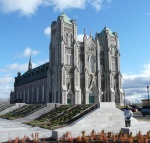 L'église et le mémori
L'église et le mémori
al -
 Les marches de l'allé
Les marches de l'allé
e des bâtisseur... -
 Maison Girardin
Maison Girardin

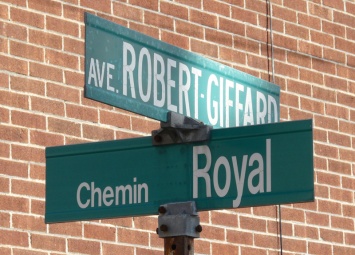
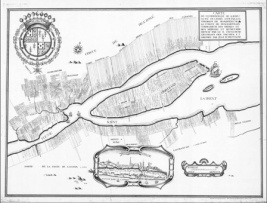
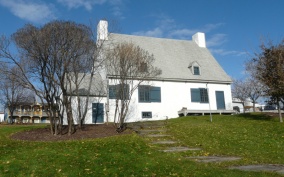
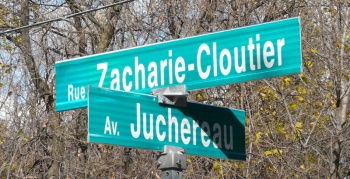
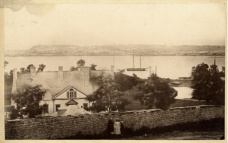
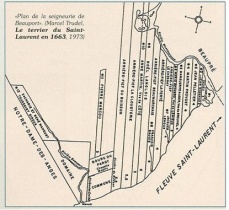
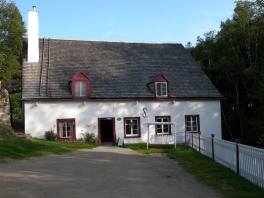
![The Allée des Bâtisseurs [Founders' Avenue]](/media/thumbs/2506/297x148-beauport_lieu_de_memoire_petit.jpg)
